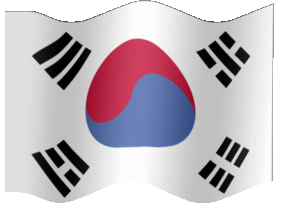Korean (한국어/조선말, see below) is the official language of both North and South Korea. It is also one of the two official languages in the Yanbian Korean Autonomous Prefecture in China. Worldwide, there are about 80 million Korean speakers, with large groups in various Post-Soviet states, as well as China, Australia, New Zealand, the United States, Canada, Brazil, Japan, and more recently, South Africa and the
Philippines.
The genealogical classification of the Korean language is debated. Many linguists place it in the Altaic language family, but some consider it to be a language isolate. It is agglutinative in its morphology and SOV in its syntax. Similar to the Japanese and Vietnamese languages, Korean language was influenced by the Chinese language in the form of Sino-Korean words. Native Korean words account for about 35% of the Korean vocabulary, while about 60% of the Korean vocabulary consists of Sino-Korean words. The remaining 5% comes from loan words from other languages, 90% of which are from English
NAMES
The Korean names for the language are based on the names for Korea used in North and South Korea.
In North Korea and Yanbian in China, the language is most often called Chosŏnmal (조선말; with Hanja: 朝鮮말), or more formally, Chosŏnŏ (조선어; 朝鮮語).
In South Korea, the language is most often called Hangungmal (한국말; 韓國말), or more formally, Hangugeo (한국어; 韓國語) or Gugeo (국어; 國語; literally "national language"). It is sometimes colloquially called Urimal ("our language"; 우리말 in one word in South Korea, 우리 말 with a space in North Korea).
On the other hand, Korean people in the former USSR, who refer to themselves as Koryo-saram (also Goryeoin [고려인; 高麗人; literally, "Goryeo person(s)"]) call the language Goryeomal (고려말; 高麗말).
DEVELOPMENT
The Korean language is classified as a member of the Ural-Altaic family (other members of this family include the Mongolian, Finnish, and Hungarian languages.) Until the early 1400s, most documents were written in classical Chinese characters (known in Korean as Hanja). As the idiographs are difficult to learn, only the educated people could read and write. King Sejong, the 4th ruler of the Joseon dynasty (1392-1910), set up a special committee of scholars in 1443 to create a new writing system specifically suited to the Korean language.
The result was Hangul (meaning 'the one script'). It originally contained 28 symbols, although 4 have dropped out of use. The alphabet has 10 vowels and 14 consonants. The consonants represent the simplified outlines of the parts of the mouth and tongue used to pronounce them. The vowels are associated with elements of the philosophy of the Book of Changes.
In 1994, Discovery magazine described Hangul as the most logical language writing system in the world. The simplicity of Hangul led Korea to become one of the most literate countries in the world. U.S. novelist Pearl Buck said that Hangul is the simplest writing system in the world and likened King Sejong to Leonardo da Vinci. Even though Hangul is a system of phonetic symbols, it is categorized as new level of feature system, the first and the only in the world. On Oct. 1, 1997, UNESCO designated Hunminjeongeum as world archive property. Koreans commemorate the creation of Hangul each year on October 9.
The Hangul Characters

Before you begin learning the language, you should take some time to practice writing Hangul.
The symbols are combined into blocks, each one representing a single syllable. Each syllable must start with a consonant, although the iung is silent in the initial position. Text is arranged either in the traditional vertical fashion, with columns reading from right to left (as in some newspapers and old books) or in rows reading left to right (as in most modern novels and magazines). The alphabet may appear complicated, but it is actually easy to learn. Once you are familiar with the characters, looking up words in a dictionary becomes easy.
When speaking Korean, you use formal or informal words and phrases, depending on the status of the person to whom you are talking. For example, you generally use informal speech to children and formal speech to older people. It is better to err by being too formal rather than showing disrespect. However, Koreans do not expect foreigners to be fluent and will usually excuse minor mistakes.



















0 comments:
Post a Comment